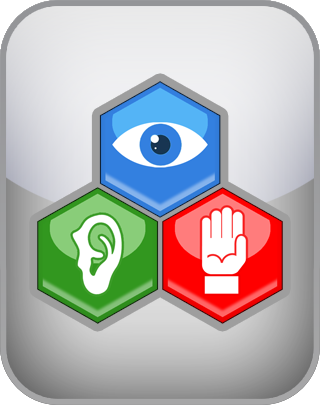Academically reviewed by Dr. Matthew Arthur-Gray, Ed.D.
Quick Learning Styles Test
Learning styles are different approaches or ways in which individuals absorb, process, and retain information. They are based on the idea that individuals have preferences for how they learn and that different teaching methods cater to different learning styles. There are several theories of learning styles, but one of the most widely recognized models categorizes learning styles into three main types: visual, auditory, and kinesthetic.
To take the Learning Styles Test, indicate your responses to each of the following statements below.
Question 1 of 18
When you have read an interesting article in the newspaper and afterward think about it, you most fondly remember:
NEXT
The IDRlabs Quick Learning Style Test was developed by IDRlabs. The IDRlabs Quick Learning Style Test is not associated with any specific researchers in the field of psychopathology, social psychology, personality psychology, or any affiliated research institutions.
The test measures the following learning styles:
Visual learning style is a way of learning in which individuals prefer to take in information through visual cues such as images, videos, graphs, and diagrams. People with a visual learning style tend to remember things better when they are able to see them rather than just hear or read about them. This type of learner benefits from visual aids such as flow charts, mind maps, and diagrams, which help them to understand and retain information more effectively. Visual learners often have good spatial awareness and can easily visualize objects in their minds. They also tend to enjoy looking at images and videos and often find it easier to learn from instructional videos rather than reading from a textbook.
Auditory learning style is a way of learning in which individuals prefer to take in information through listening. People with an auditory learning style tend to remember things better when they hear them rather than just seeing or reading them. This type of learner benefits from verbal explanations and lectures, as well as listening to music or audio recordings. They often have a good memory for spoken information and are able to remember details and instructions that they hear. Auditory learners may also enjoy participating in class discussions, debates, and group presentations. They may find it challenging to learn from written information or visual aids, as they tend to process information more effectively through hearing.
Kinesthetic learning style is a way of learning in which individuals prefer to take in information through physical movement and hands-on experiences. People with a kinesthetic learning style tend to remember things better when they are able to engage their bodies and hands rather than just seeing or hearing about them. This type of learner benefits from hands-on activities, such as building models, taking apart and putting together machinery, or engaging in role-playing exercises. They often have good coordination and motor skills and may enjoy sports or other physical activities. Kinesthetic learners may struggle in traditional classroom settings where they are required to sit still for long periods of time and may benefit from more hands-on, experiential learning opportunities.
As the developers and publishers of this Quick Learning Style Test, which allows you to screen yourself for your preferred learning style, we have striven to make this test as reliable and valid as possible by subjecting it to statistical controls and validation. However, free online quizzes such as the present Quick Learning Style Test do not provide professional assessments or recommendations of any kind; the test is provided entirely “as-is.” For more information about any of our online tests and quizzes, please consult our Terms of Service.

